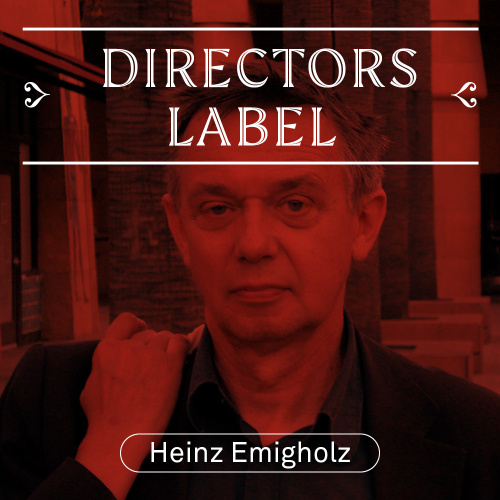
Two Museums
GER 2013, 18 min
A study of two museums: The Menil Collection in Houston, Texas, and its predecessor, the Museum of Art, Ein Harod, Israel.
Synopsis
Two museums compared: The Museum of Art, Ein Harod, Israel, which Samuel Bickels (1909-1975) built there in 1948, and The Menil Collection in Houston, Texas, built by Renzo Piano (*1937) 1986. The method of natural lighting in Bickels’s construction was the direct model for Piano, who adopted for his construction at the request of its patroness Dominique de Menil.
TWO MUSEUMS is the 22. part of Heinz Emigholz’ series “Photography and beyond”.
Streaming-Info
Rent or buy the movie on our Vimeo channel.
Language: No dialogue
Film kaufen
VOD
451-Vimeo
DVD
451-Alive Shop
amazon
Awards and Festivals
- International Film Festival Rotterdam, 2014
- Internationale Kurzfilmtage Oberhausen, 2014
- Jerusalem International Film Festival, 2014
- Doclisboa International Film Festival Lisboa, 2014
- Viennale – Vienna International Film Festival, 2014
- First Look Festival at Museum of the Moving Image, New York 2015
- National Gallery of Art, Washington DC 2015
- Berkeley Art Museum, 2016
- BDA – Filmforum Bremen, 2018
Additional Texts
Two Museums (Zwei Museen)
by Michael Sicinski
Few filmmakers have been as committed to a single long-term project as German experimentalist Heinz Emigholz, and fewer have been able to derive as much subtle variety from what may seem on the surface like a rather limited set of procedures. Since the early nineties Emigholz has been concentrating on using cinema to explore and transcribe the spatial experience of architecture. His “Photography and beyond” series treats filmmaking as a literal extension of the art of still photography. Emigholz never moves his camera, choosing instead to compose images as one would for a photographic essay or monograph, with video providing the additional component of time. We see cars go by in the distance, hear the hum of air conditioning, perceive slight footsteps in the background, or just observe micro-shifts in the light. In this respect, Emigholz honors architecture’s raison d’être, as a total environment to be occupied by the living, rather than an empty monument to itself.
Emigholz has long favored modernism, and while some of his films have focused on reasonably renowned subjects (1999’s Sullivan’s Banks; 2008’s Loos Ornamental), many more have involved reconsideration of lesser-known twentieth-century innovators (1999’s Maillart’s Bridges; 2003’s Goff in the Desert; 2007’s Schindler’s Houses; 2009’s Two Projects by Frederick Kiesler). These films profile the work of figures who are revered in architecture and design circles but seldom celebrated in the broader history of the modern era. These films, of course, are not educational tools, nor are they aimed at either students or specialists. They screen at festivals the world over and, through the auspices of the German video label Filmgalerie 451, can even be rented from Netflix. The “Photography and beyond” project, then, turns architecture into cinema, while allowing it to retain its identity. By providing an analytical cine-tour of the greatest extant works of underappreciated architects, Emigholz asks us to consider the history of modernism as an open, evolving question.
Unlike some films that are centered on individuals, Two Museums is a thematic work. In it, Emigholz focuses on two specific buildings: the Menil Collection in Houston, designed by Renzo Piano (best known for the Pompidou Centre in Paris), and the Museum of Art in Ein Herod, Israel, built by Samuel Bickels. Nearly forty years separate the two projects, and Emigholz takes us through the Menil first. Piano’s design is notable for its expansive use of natural light, with the long rectangular structure end-capped by large windows and, most notably, the ceiling outfitted with pivoting baffles that strategically channel the sunlight into the gallery spaces.
The Menil is situated in the middle of a Houston neighborhood (the one where I live, actually), and so Emigholz emphasizes Piano’s design in how it harmonizes indoor geometry with outdoor green space and the irregularity of urban flora. (That Emigholz filmed during an exhibition of Richard Serra’s large black charcoal drawings certainly helped his effort.) By contrast, the section on Bickels’s 1948 museum starts out on a desolate intersection with a military vehicle behind chain-link, shows us bomb-damaged structures, and takes us, shot by shot, down a tree-lined road to the museum. The rhetoric is clear: Houstonians can experience the aesthetic in safety, but those living in Ein Herod must seek it out as a sanctuary.
Bickels’s façade is nondescript, weather-beaten modernism in the Courbusier style with adaptations (metal siding on the roof, wooden paned-glass doors) that are likely borne of necessity. The building is wrapped by a four-foot high retaining wall. There is a sad functionalism to it all, but once inside Emigholz shows us how the dirty windows and porous ceiling actually bathe the museum in light. The Ein Heron building looks much more like a university library than a museum per se, with glass bookcases built right into the white walls and the offices and study rooms comprising as much space (at least as Emigholz shows it) as exhibition halls.
But a look at the ceiling displays a key point of connection to Piano’s Menil design: large directional shells for pivoting the light. In this case they are stationary, forming interior shades that filter the sun to the peripheral walls. As the second half of Two Museums concludes, we see that Bickels’s museum building has a sculpture courtyard deeply recessed in the structure, as well as numerous stairwells into underground galleries. Heavy pillars, thick walls, and reinforced concrete abounds. It is not surprising that security was foremost on Bickels’ mind, as it was built in 1948. What Emigholz’s film shows us through comparison is that both buildings share a general orientation – the open concept, the integration of natural light into a cultural citadel – but history and location demanded different solutions to the same basic assignment.
Watch Movie
VOD
451-Vimeo
DVD
451-Alive Shop
amazon
Credits
Director and Director of Photography
Heinz Emigholz
Assistant Camera
Till Beckmann
Editor
Heinz Emigholz, Till Beckmann
Original Sound
Till Beckmann
Sound Design
Jochen Jezussek, Christian Obermaier
Sound Mixer
Jochen Jezussek
Postproduction
Till Beckmann
Production Assistant
Markus Ruff, Alex Jovanovic
Producers
Frieder Schlaich, Irene von Alberti
Produced by
Filmgalerie 451
DVD-Details
Released on the DVD DIESTE [Uruguay]
Distribution Details
Screening Format
DCP (2K, 25fps, 5.1)
Blu-ray disc
Aspect Ratio
16:9
Language
International Version (no dialogue)
Promotion Material
Poster (Print-Pdf)
License Area
Worldwide








